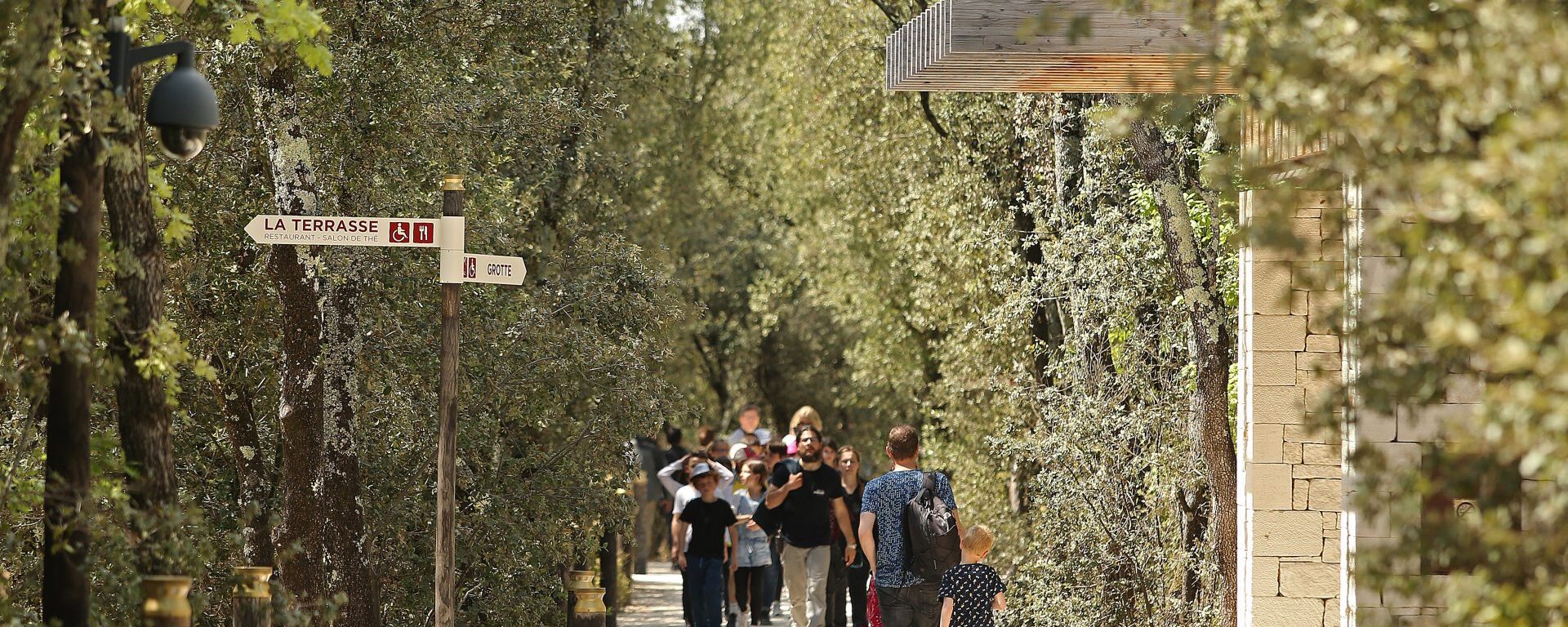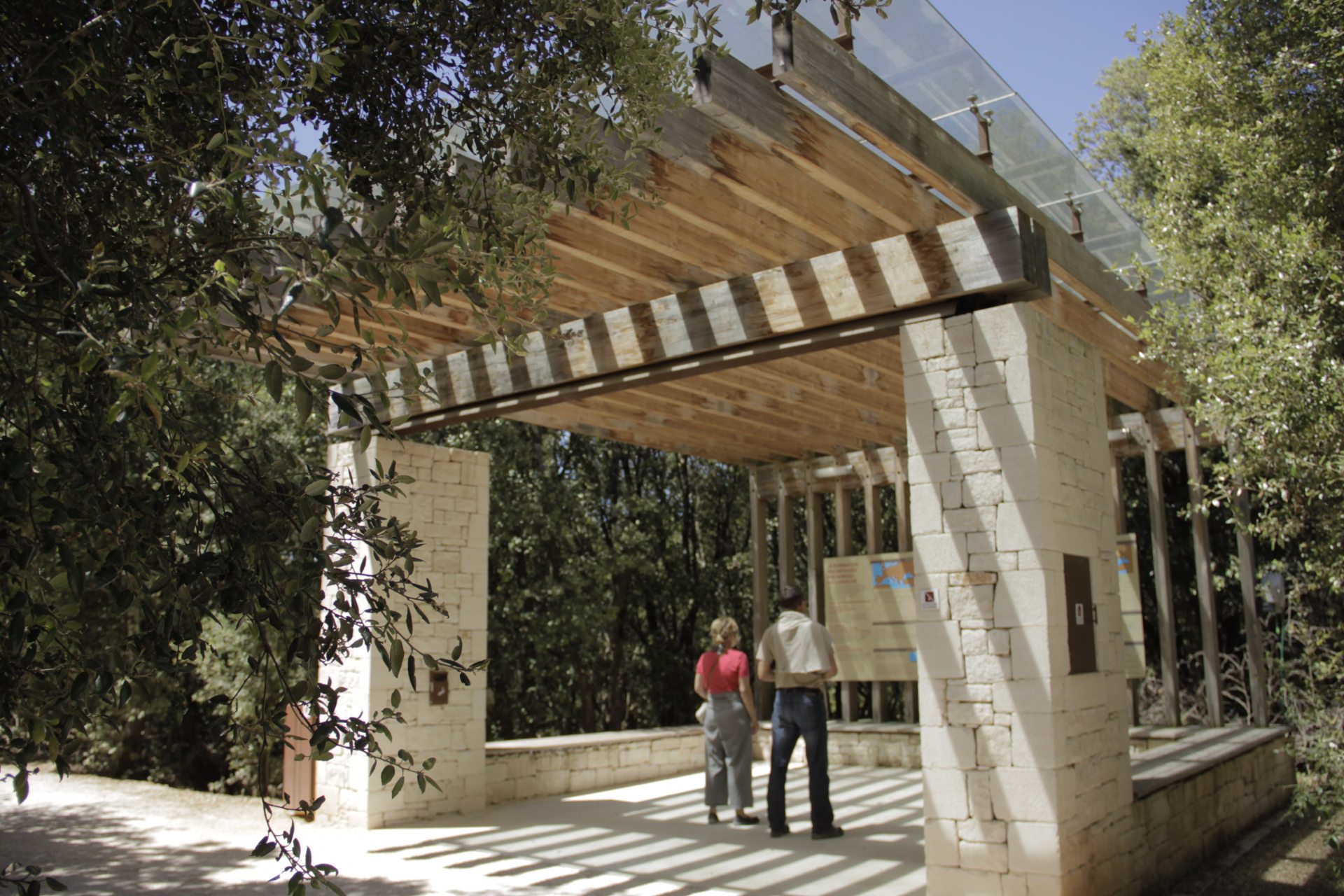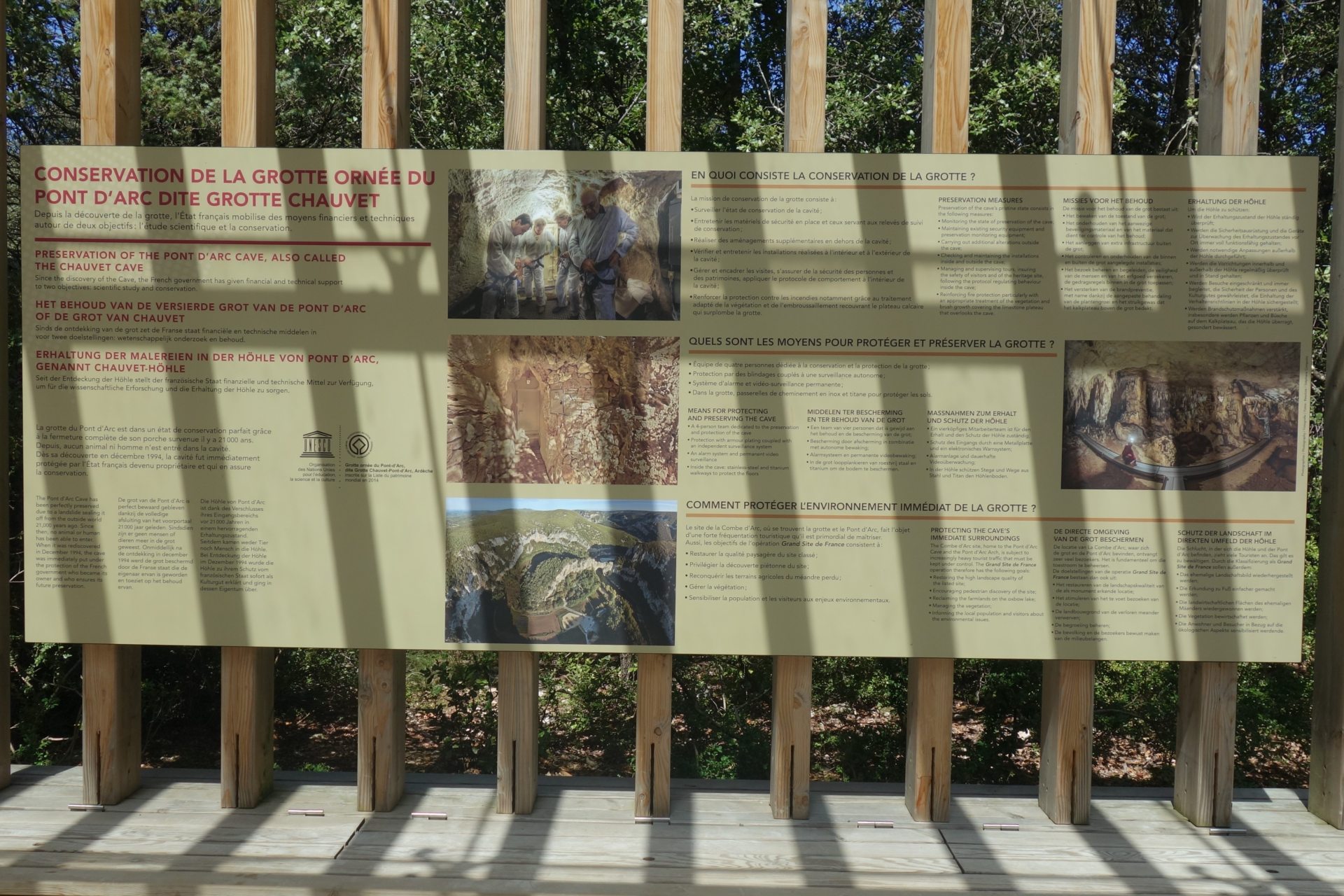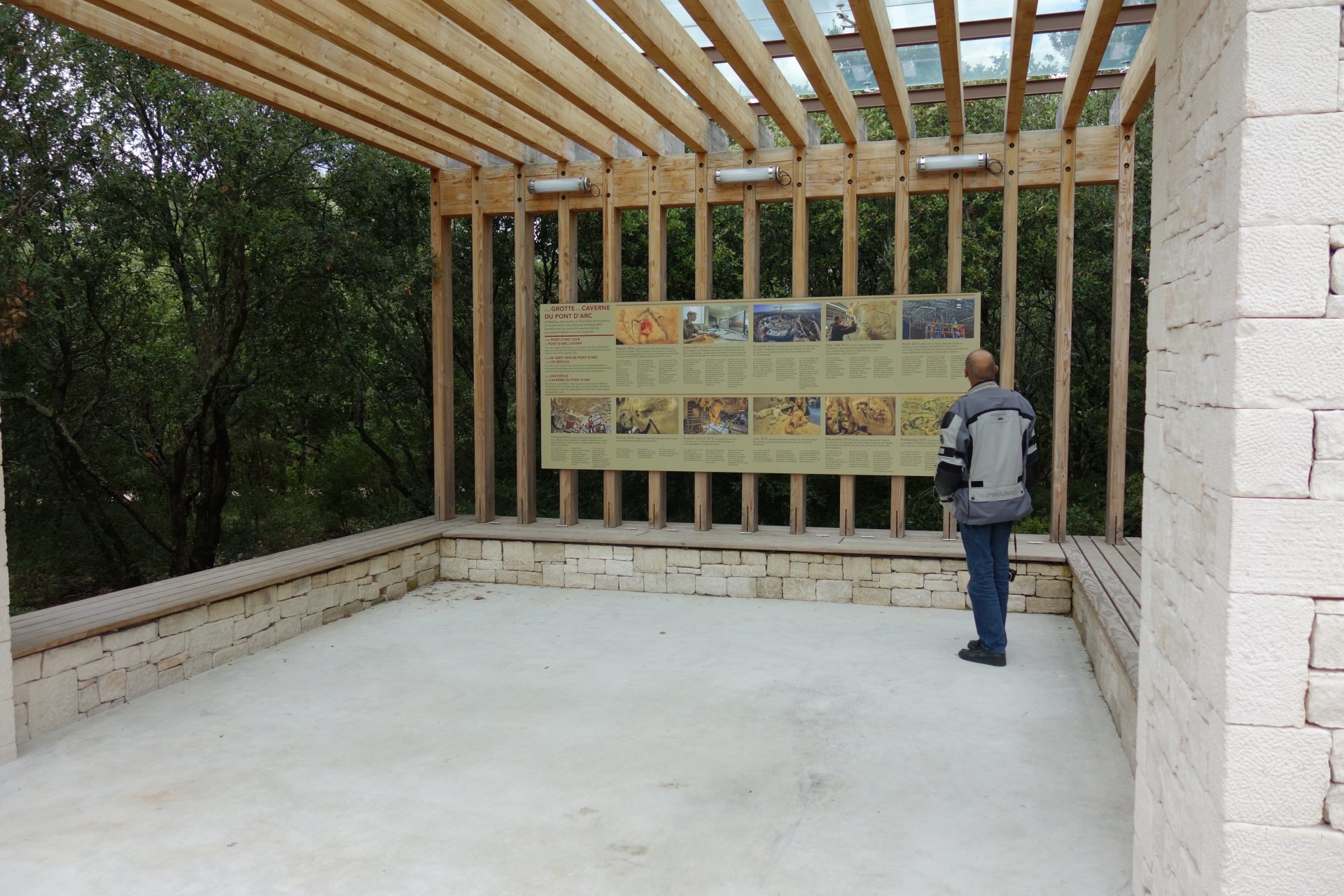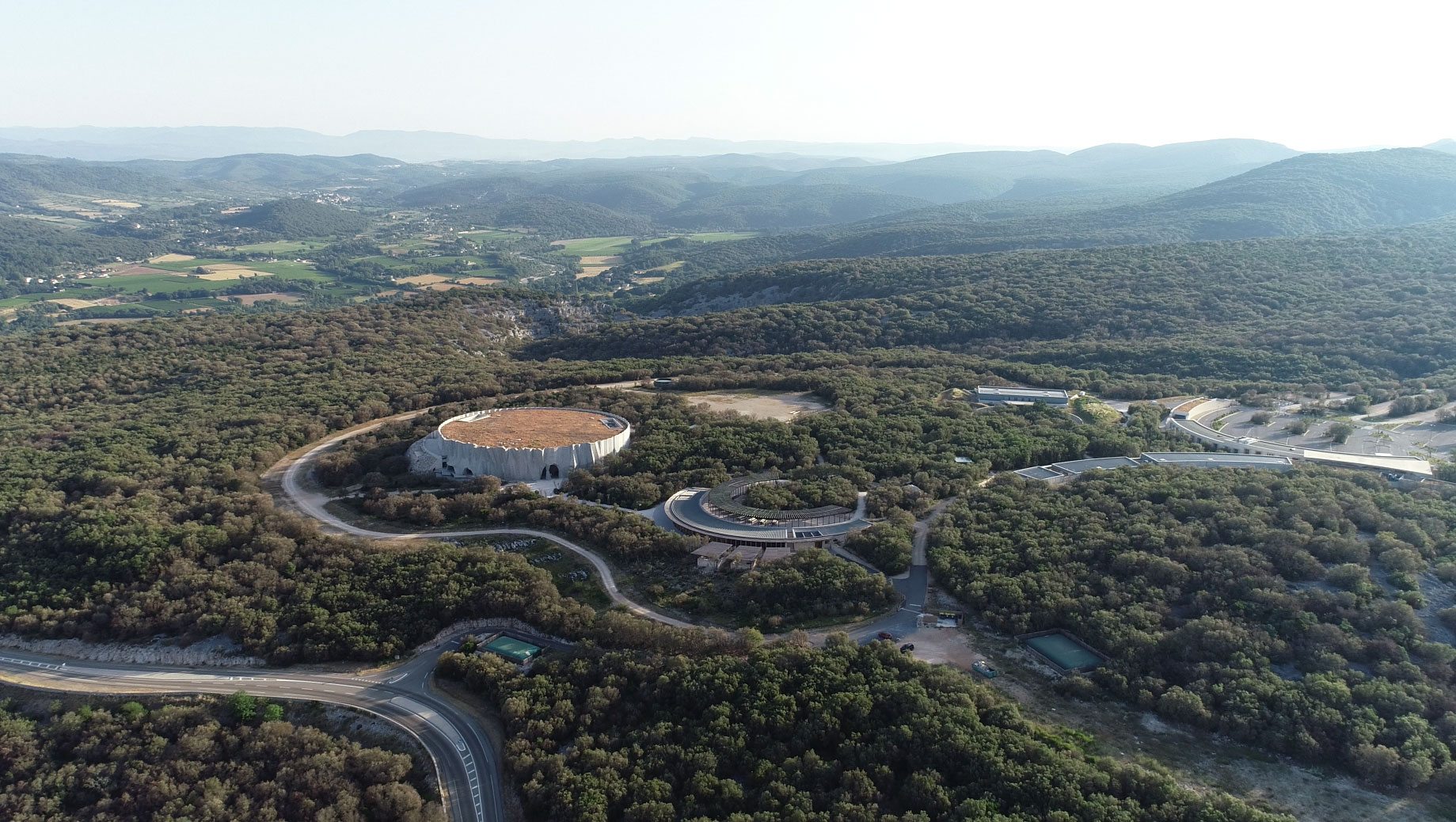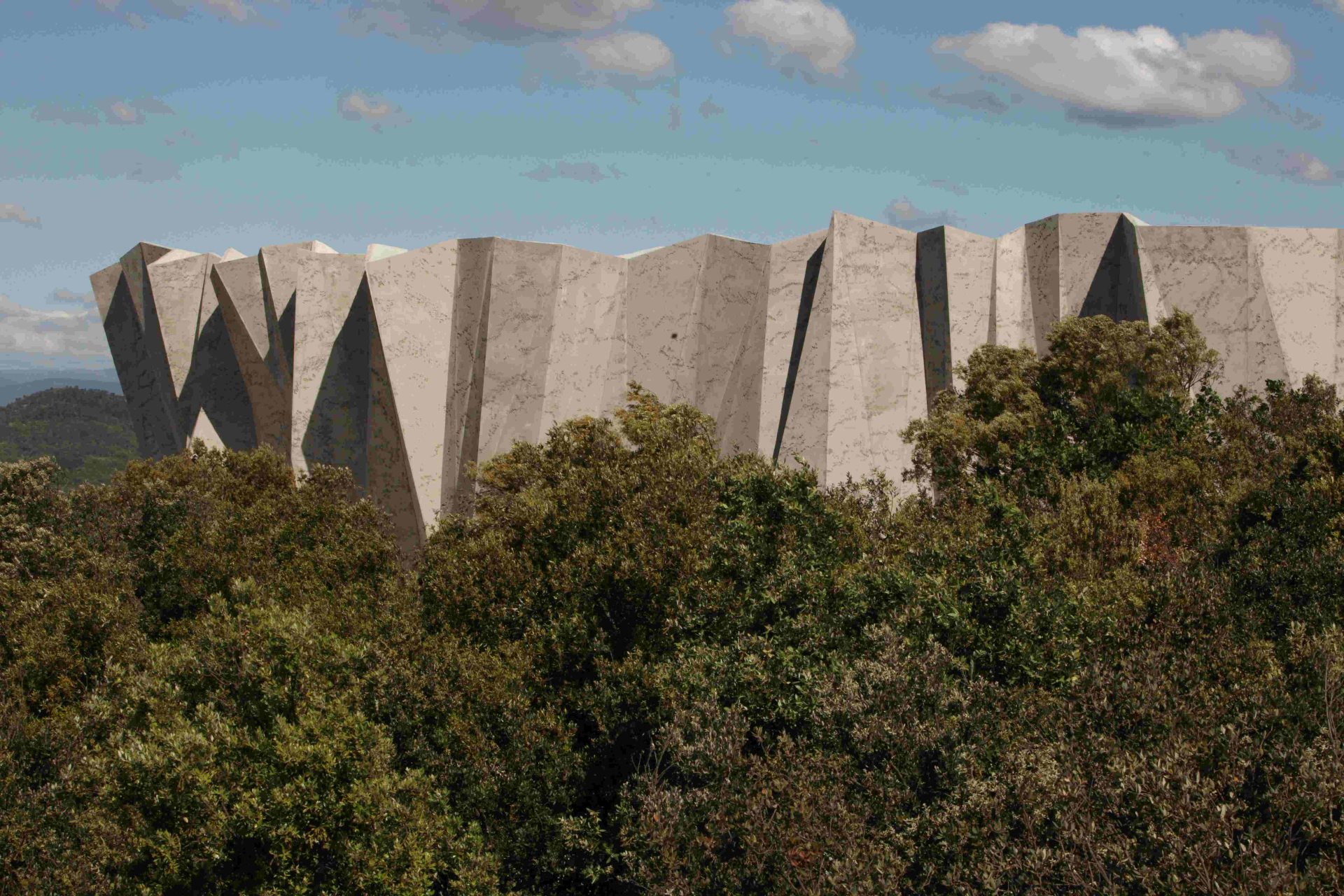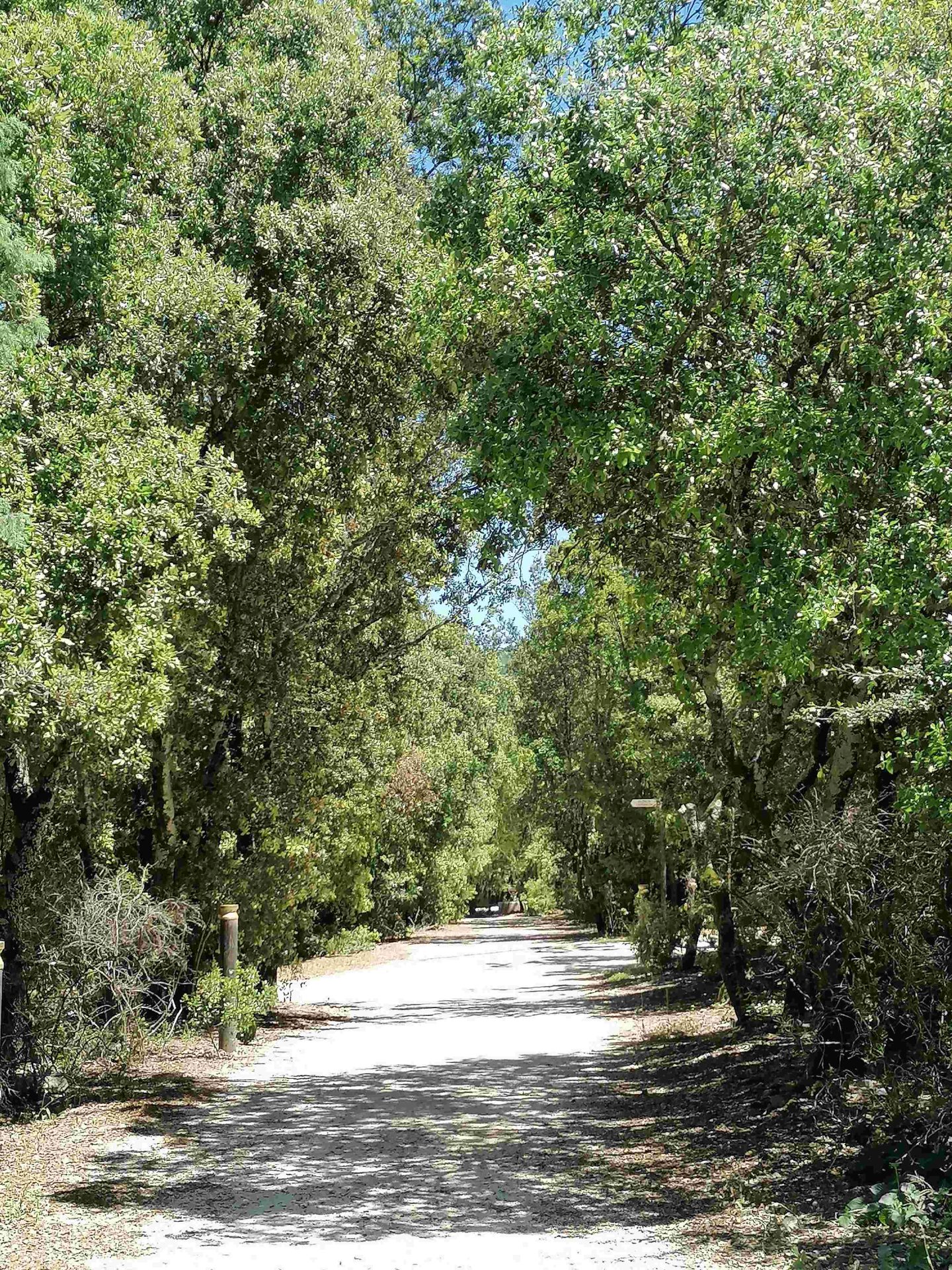A contemporary architectural undertaking in the heart of nature
Visitors can wander through a Mediterranean oak forest, characteristic of the karstic environments of southern Ardèche. Holm oaks, box trees, juniper shrubs, strawberry trees, Mediterranean smilax and violets are easily spotted along the shady pathways that connect each building. Each one of the 200 oak trees that were removed to make space for the buildings and pathways was subsequently replanted elsewhere on the site. No non-native plant species have been introduced to the park.
Discovery points
Illustrated panels are scattered throughout the park. They provide a shady spot to rest while learning more about the techniques used to create the replica, dating methods, the evolution of the landscape and of its numerous caves, the panorama of prehistory in Ardèche, or conservation methods in the Chauvet cave.
The priority of this project was seamless integration into the landscape.
An imprint on the landscape
Perfectly integrated into the natural setting of the Razal plateau, the Grotte Chauvet 2 – Ardèche site was designed to be an “imprint on the landscape” by the architectural firm Fabre & Speller (Clermont-Ferrand/Paris), the Ardèche-based architects from 3A (Le Teil), and landscape architect Franck Neau (Paris). Understated and simple architecture was favoured in the wooded site of 15 hectares to create a feeling of timelessness and of being at one with nature, all while providing an optimal visitor experience.
No prominent features jump out at the visitor at first glance, except maybe for the sweeping entrance canopy and its butterfly-esque shape above the trees, and the handful of raised platforms that accentuate the shape of the land. Nature and architecture sought to understand and to be in tune with one another.
Panoramic vistas
The stroll through the park naturally leads visitors towards the cave and the panoramic viewpoint located on the side of the building that contains the replica. Be amazed by a breathtaking panoramic view that will entice you into exploring Ardèche. The well-documented viewpoint indicators help visitors to better understand the landscape, and to find the optimum light conditions for admiring the Sampzon rock, the Tanargue mountain range, and the Cévennes.
The spacious viewing platform also allows for an expansive, unobstructed view. Bathed in sunlight, numerous activities are held here. At certain times of the year, visitors can learn about prehistoric hunting techniques or astronomy. It also hosts occasional outdoor events.
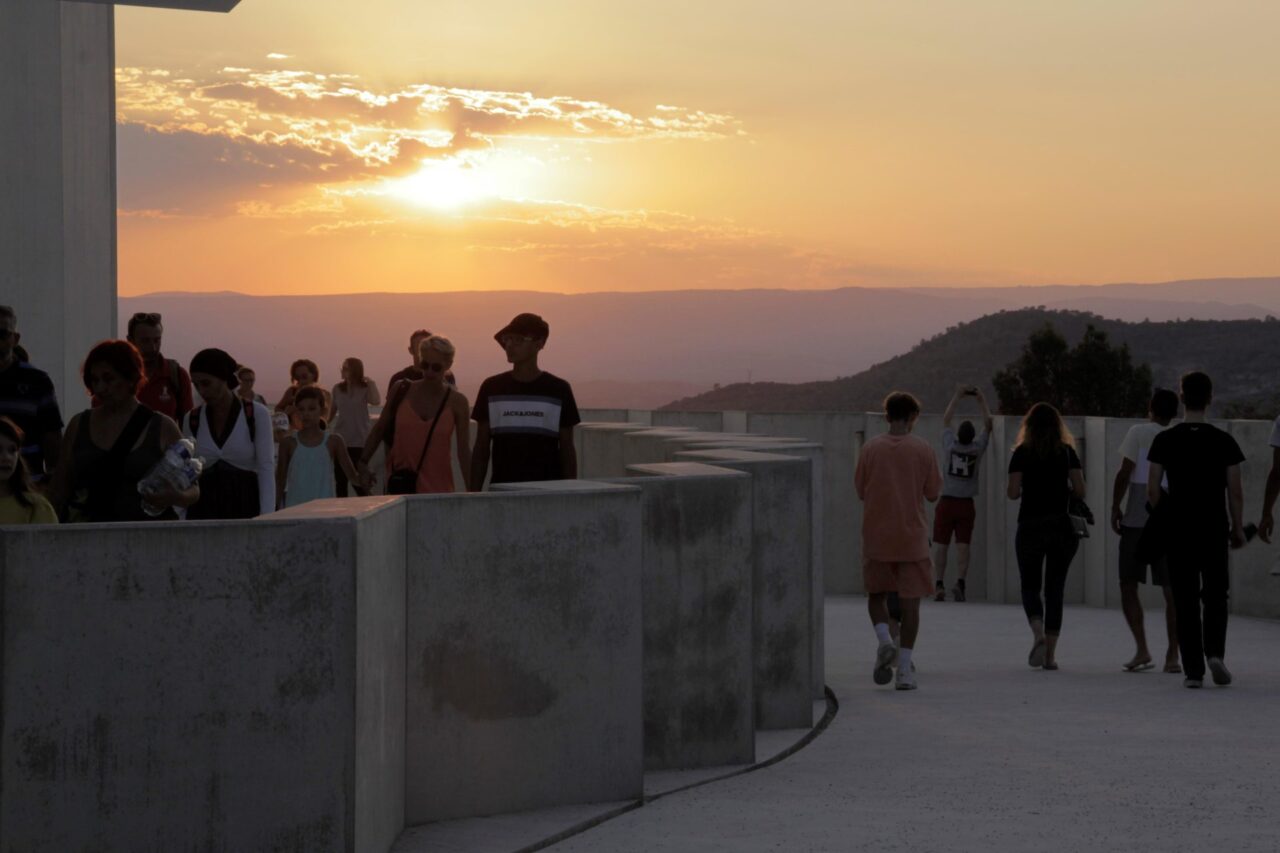 Grotte Chauvet 2 Ardeche
Grotte Chauvet 2 Ardeche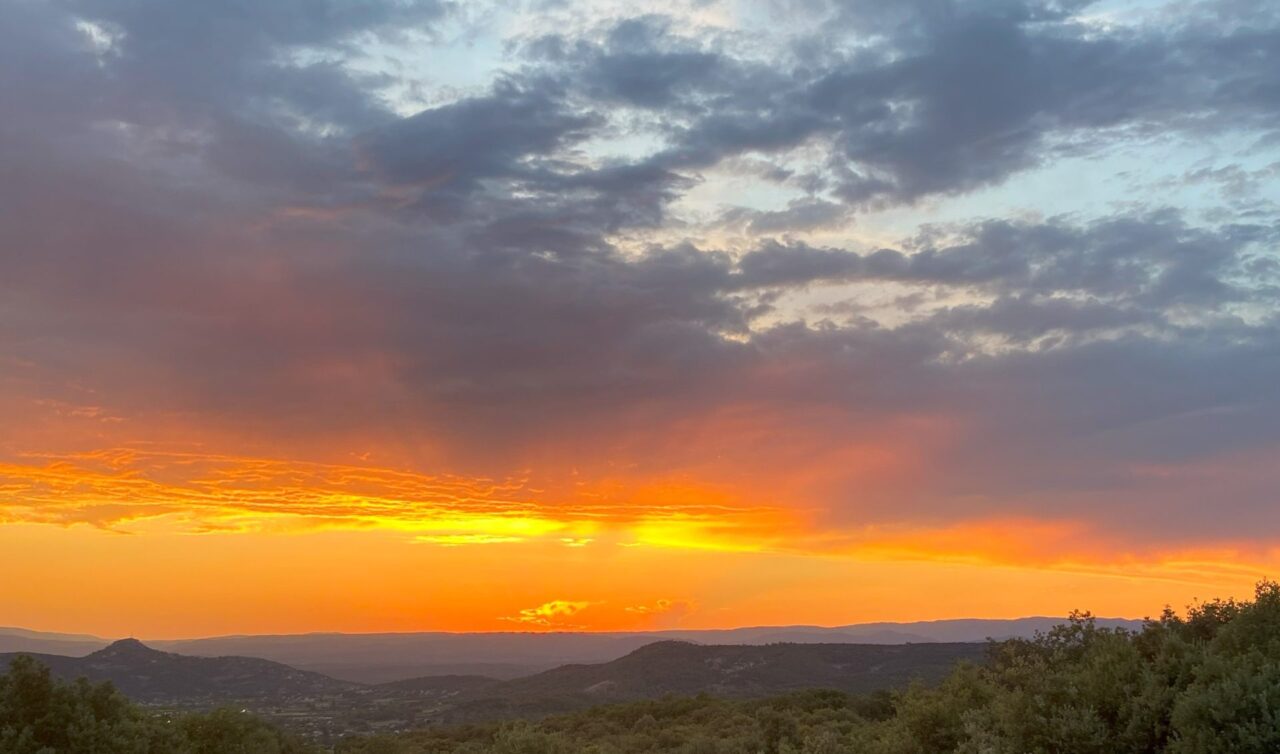 Grotte Chauvet 2 – Ardèche
Grotte Chauvet 2 – Ardèche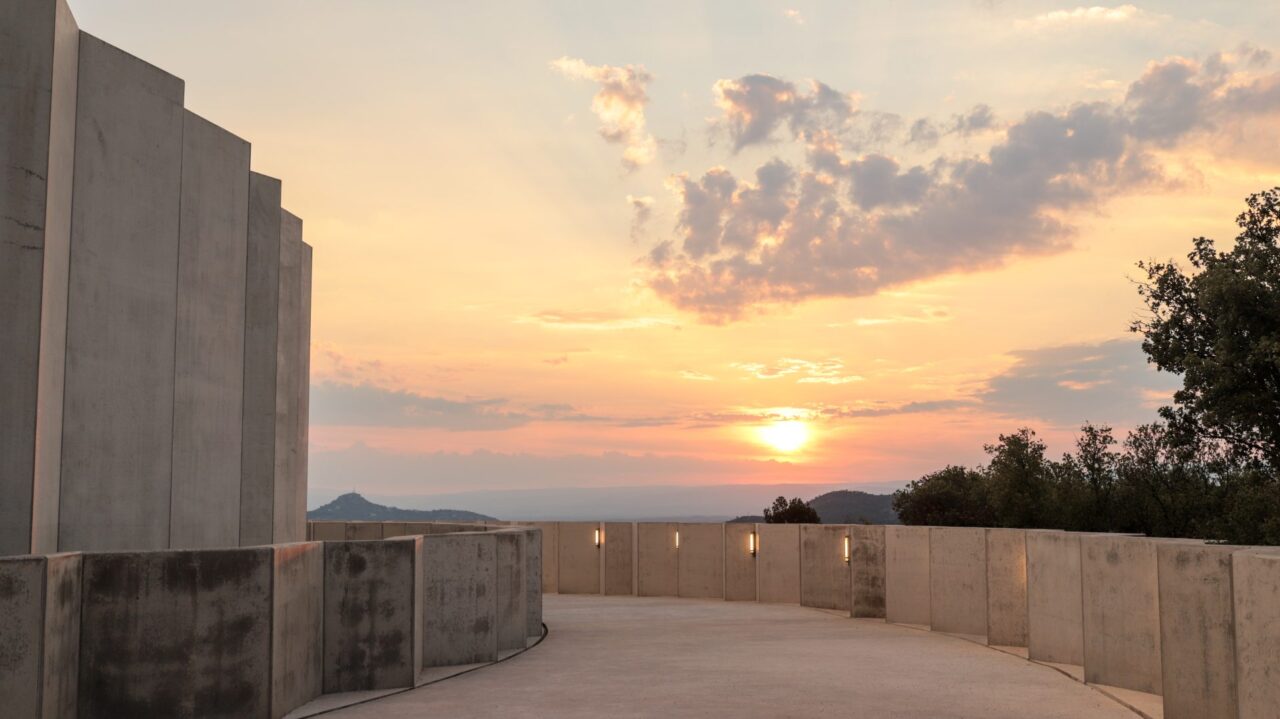 Grotte Chauvet 2 – Ardèche
Grotte Chauvet 2 – Ardèche
